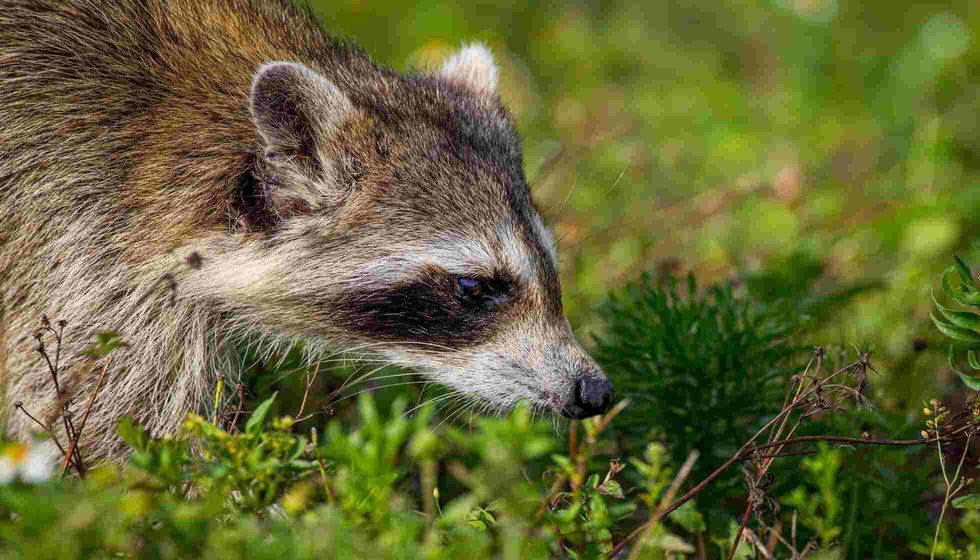Animals That Eat Plants And Animals: Omnivore Facts For Kids

Ever wonder why some animals aren't picky eaters? In the wild kingdom, there are creatures known as omnivores, and they have the most interesting diets because they eat both plants and animals. They are part of what is called the 'food chain' and are essential for our ecosystem's balance.
Animals like brown bears, fluffy squirrels, and yes, even humans, are called omnivores. They can munch on fruits, nuts, seeds, and roots just as happily as they eat meat. That's why their menu is full of variety!
Understanding omnivores can help you see the big picture of how life works on Earth. These animals are remarkable adapters, finding just the right food to thrive, whether it's a juicy berry or a small rodent, showcasing their adaptability. It's a tale of biological brilliance that allows them to survive in different environments and situations.
Get ready for a journey into the world of omnivore creatures big and small that roam forests, soar through skies, swim in oceans, and learn how they survive and help the environment they live in.
What makes an animal an omnivore?
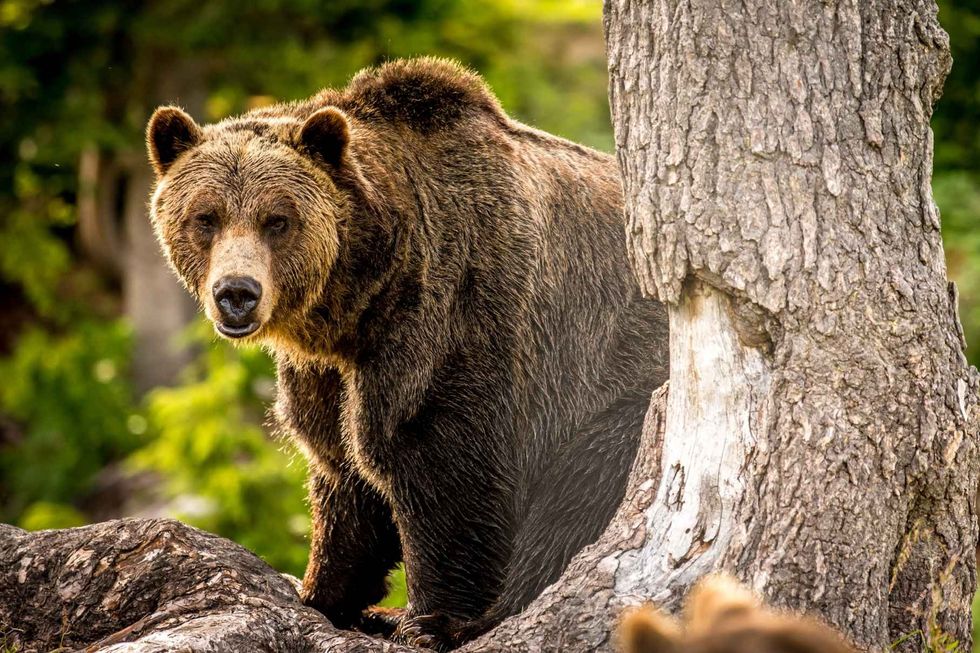 What Do Grizzly Bears Eat? Are They Carnivores Or Omnivores?
What Do Grizzly Bears Eat? Are They Carnivores Or Omnivores?Have you ever thought about what it takes for an animal to be able to eat both plant matter and animal food? It's all down to their amazing physical features and physiology.
- Omnivores have a unique digestive system that is crucial for processing diverse foods.
- Omnivorous animals have a combination of sharp front teeth and flat molars in the back.
- Strong and sharp canines help omnivores catch prey and tear into food like meat.
- Flat molars are used to grind plant matter for efficient digestion.
- Omnivores can convert a wide range of foods, from blueberries to beetles, into vital energy.
Omnivores In The Food Chain
The food chain might sound complicated, but it's really a simple way of showing who eats whom in nature. Omnivores have a special place in this chain because they can feed on both plants and other animals.
- Because they can eat both meat and plant-based foods, omnivores play multiple roles in the ecosystem.
- They can be predators (like when they hunt small mammals or birds) or prey (like when larger omnivores or carnivores hunt them) in different areas of nature.
- They can also be seed spreaders when they eat fruits and the seeds pass through their digestive systems, ready to grow into new plants.
- The passage through the animal's digestive system frequently leaves the seeds in a condition that is favorable for germination.
- Omnivores link the energy transfer between primary producers (plants) and higher-level consumers, including carnivores.
- This feeding strategy helps to stabilize food webs by regulating plant and animal populations in the ecosystem.
- Efficient nutrient cycling in ecosystems relies on omnivores' varied diets.
- Recognizing omnivores as key ecological architects highlights their significance beyond their diverse eating habits.
- Animals like raccoons are medium-sized omnivores that can snatch fish from a stream or enjoy a snack of berries and nuts from the forest floor.
A Diverse Dining Experience: The Life of Omnivores
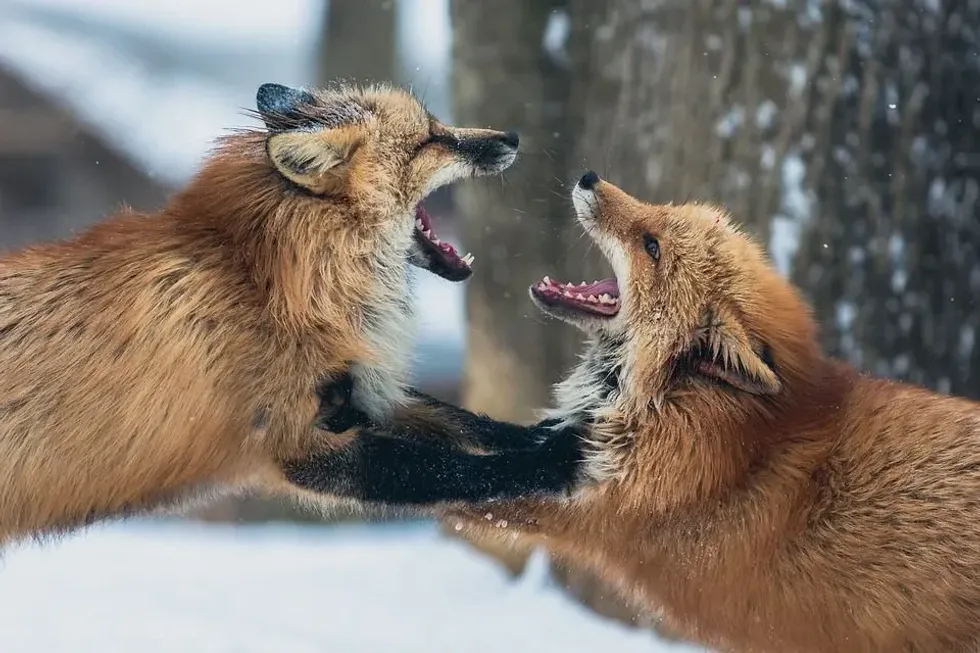
Omnivores enjoy a variety of dietary options, Their flexible palates allow them to experience many different foods that Earth provides.
- Nature offers a wide-ranging menu, and omnivores enjoy the most varied diet compared to meat-only or plant-only eaters.
- Opportunistic omnivores feast on both plants (flora) and animals (fauna), switching between veggies and meat.
- The omnivore group includes a broad spectrum of animals, from tiny bugs to big bears.
- This dietary diversity among omnivores highlights their complex survival strategies in the wild.
- Their flexible eating habits give them an edge, allowing them to thrive across different habitats and seasons. This adaptability showcases the cleverness of their evolutionary development.
- As seasons and landscapes change, omnivores adjust their diets successfully. Examples include eating summer fruits, autumn seeds, and winter insects.
- By eating both plants and other animals, omnivores keep populations of other organisms in check. For example, by eating small rodents, omnivores can help prevent overgrazing in an area.
- Their diverse diets help them adapt to changes. If one food source becomes scarce, they can switch to others, which is crucial for survival, especially in the wild.
Different Types Of Omnivores
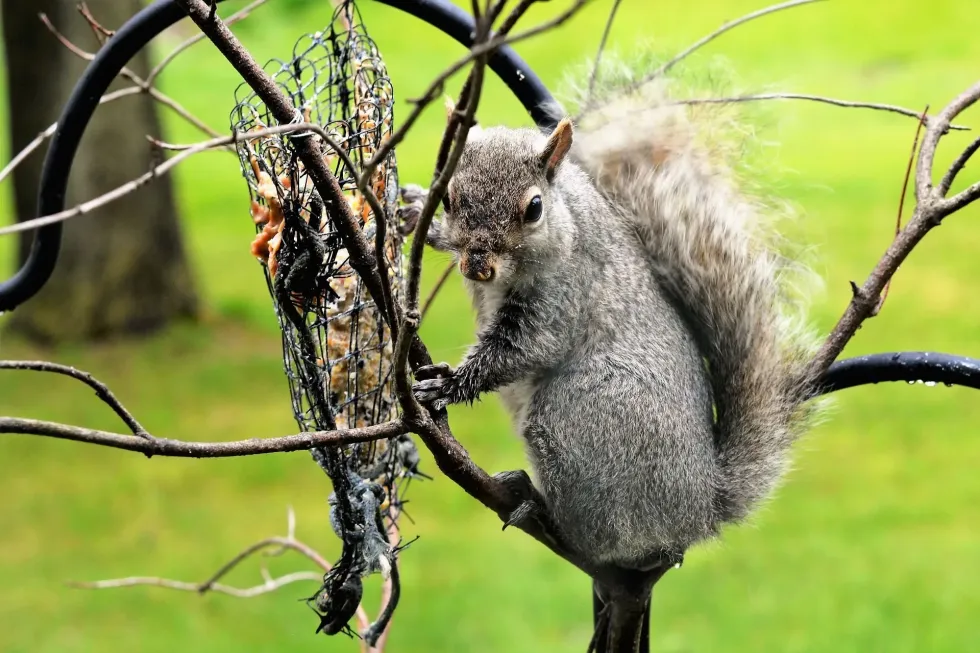 Do Squirrels Eat Birds? Here's Why They Might Eat Baby Birds!
Do Squirrels Eat Birds? Here's Why They Might Eat Baby Birds!Not all omnivores are the same! Some are big, some are small, and they all have unique ways to find food and survive in their habitats.
- Big omnivores, like pigs and bears, look for food on the ground, like roots, raid a beehive for honey, or catch fish in a river.
- Smaller omnivores, including birds like crows and some rodents, often eat bugs, enjoy nuts and seeds, or feast on leftovers from other animals' meals.
- Some omnivores, like certain monkeys, can be seen picking fruit from trees and also hunting small lizards or frogs.
- Ocean-dwelling omnivores, like certain species of turtles, feed on aquatic plants as well as crustaceans and fish.
- Urban omnivores, like city-dwelling raccoons, find meals in trash cans and gardens, eating human leftovers as well as insects and fruits
Omnivorous Animals Around The World
Omnivores live all over the planet, in places like Central America's rainforests, where the coati roams, and in the woods of North America, home to the black bear.
- Human beings are perhaps the most widespread omnivores. Our diets include a wide range of foods from all over the world, helping us adapt to different environments and cultures.
- The National Geographic Society reports that omnivores like the opportunistic raccoon have adapted to life in urban areas, by finding meals in garbage as well as natural sources like streams and forests.
- In diverse habitats, like jungles and deserts, local omnivores have diets that reflect available resources, eating everything from cacti to small animals.
- Children around the globe grow up learning to eat what's around them, whether that's rice and vegetables, dairy and bread, or fish and seaweed, making humans very adaptable omnivores.
- Black bears and goats thrive in forested areas where they can find a mix of plant-based food and small animals.
- Pigs and domesticated dogs have adapted to live alongside humans, utilizing both natural and human-provided food sources.
- Aquatic omnivores, like certain turtle species, live well in water-rich habitats enjoying both marine plants and small fish.
- Urban-dwelling omnivores such as pigeons and squirrels find nourishment in city parks and public spaces, consuming a blend of natural seeds and human leftovers.
- Many bird species are adaptable omnivores, readily switching from eating insects in the spring and summer to berries and seeds in the autumn and winter.
The Behavioral Traits Of Omnivores
Omnivores are known to show instincts and exhibit a range of intriguing behaviors that help them adapt to their environments successfully for food.
- Animals like raccoons use their smarts to find food in tough spots, even opening jars or gates.
- Pigs rely on their strong sense of smell to find food hidden underground, like truffles or roots.
- Birds like crows are also smart omnivores and can use tools to get to their meals, showing complex problem-solving skills.
- Bears remember the locations of food sources and return to them seasonally, showing a strong memory and understanding of their environment.
- Some omnivores, like certain primates, watch and learn from others to discover new food sources or techniques to access food.
Conservation Of Omnivorous Species
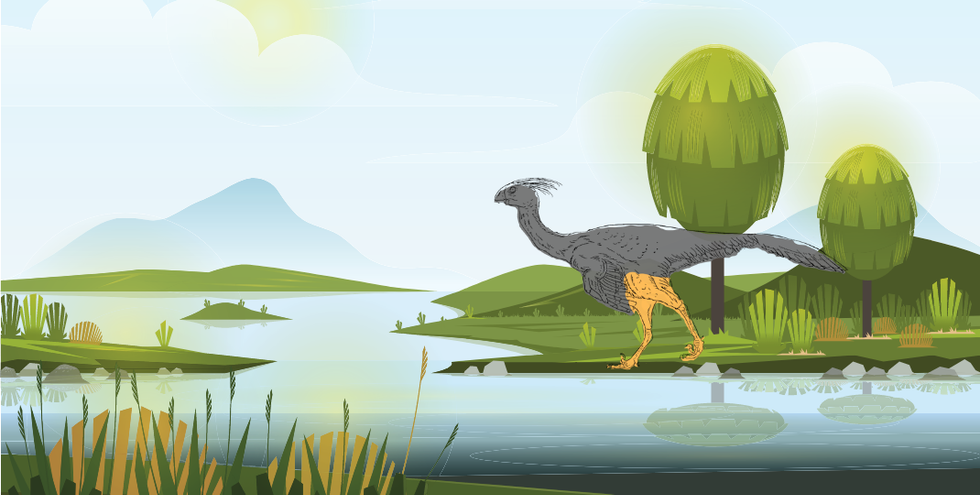 Avimimus - The Omnivore of the Cretaceous Period
Avimimus - The Omnivore of the Cretaceous PeriodConserving the habitats and lives of omnivorous species is key to protecting our planet's biodiversity and ecological health.
- Wildlife conservation strategies aim to safeguard the natural habitats where omnivores source their diverse meals.
- It's vital to maintain the integrity of food chains that omnivores participate in by preventing overhunting and deforestation.
- Our agricultural practices can affect the natural habitats of other omnivorous animals, leading to changes in wildlife behaviors. We need to farm carefully to ensure we don't harm the spaces where omnivores like bears and birds live.
- Education and awareness campaigns can help communities learn about the roles omnivores play in nature, encouraging protection efforts.
- Responsible urban development and planning can create green spaces that support the food needs of city-living omnivores.
- Efforts to reduce pollution and maintain clean waterways are crucial to preserve the feeding grounds for aquatic omnivores.
Omnivores And Climate Change
The changing climate affects the availability of food sources for omnivorous animals, which may alter their feeding patterns and behaviors.
- Climate change can lead to shortages of typical omnivore foods, like certain fruits or prey species.
- These changes in availability can push omnivores to find and eat foods they wouldn't normally choose.
- If their usual food sources decline, omnivores might travel further to find enough to eat, which can lead to more interactions and conflicts with humans.
- Some omnivores might have trouble adapting to a changing diet, which could affect their health and the number of animals in their species.
- The balance of ecosystems may shift as omnivores alter their diets in response to climate-induced changes in their habitats.
FAQs
Can omnivores change their diet based on where they live?
Yes, omnivores can and do change their diets depending on the availability of food in their habitat. For example, coastal brown bears might eat more fish, while inland bears eat more plants and insects.
Do all omnivores eat the same types of foods?
No, different omnivores prefer different foods based on what's available in their environment. For example, a brown bear might eat fish, while a raccoon in the city could eat leftovers from humans.
Do omnivores always eat a balanced diet of plants and animals?
Not necessarily. The balance of plant versus animal matter omnivores consume can vary heavily depending on the season, food availability, and individual preference.
How do omnivores impact their prey populations?
Omnivores can help manage the populations of their prey species, which might otherwise under-populate and harm their ecosystems.
Can omnivores live anywhere because they eat so much variety?
Omnivores can live in many places, but not everywhere. They need to live where they can find the specific plants and animals they eat.
Are omnivores the strongest animals because they eat both plants and animals?
Not necessarily. While eating both can be an advantage, it doesn't automatically make them stronger than animals that eat only plants or meat.
Why do omnivores eat both plants and animals?
Omnivores eat both to get all the different nutrients they need to be healthy. Plants and animals provide different kinds of vitamins and minerals.
Understanding omnivores enriches our knowledge of nature's complexity. Animals that eat both plants and animals are vital players in our ecosystems, and their adaptability is key to their survival.
By learning about omnivores, kids can understand how nature works and how all living things are connected. So whether they are stalking prey, foraging for berries, or cracking open a nut, the world of omnivores is endlessly captivating and full of surprises.
We Want Your Photos!
More for You
Bachelor of Science in Mathematics & Computer Science

Ijeoma AsuohaBachelor of Science in Mathematics & Computer Science
Ijeoma is a passionate mathematics and computer science graduate with a penchant for problem-solving and education. Growing up in a large family, she developed a strong sense of responsibility and a love for nurturing young minds. Driven by her natural inclination, Ijeoma often found herself tutoring and mentoring her little cousins and nephews, and She discovered a deep satisfaction in witnessing their growth. Her interactions with her family members sparked a desire to pursue a career where she could combine her technical expertise with her passion for education. Inspired by Kidadl's mission to empower young learners through engaging content, Ijeoma is eager to contribute her skills and knowledge to the team. With her background in mathematics and computer science, coupled with her nurturing nature and teaching experience, she aspires to create impactful educational resources that spark curiosity and inspire learning in children worldwide.
Bachelor of Science specializing in Human Anatomy

Joan AgieBachelor of Science specializing in Human Anatomy
With 3+ years of research and content writing experience across several niches, especially on education, technology, and business topics. Joan holds a Bachelor’s degree in Human Anatomy from the Federal University of Technology, Akure, Nigeria, and has worked as a researcher and writer for organizations across Nigeria, the US, the UK, and Germany. Joan enjoys meditation, watching movies, and learning new languages in her free time.
Disclaimer
1) Kidadl is independent and to make our service free to you the reader we are supported by advertising. We hope you love our recommendations for products and services! What we suggest is selected independently by the Kidadl team. If you purchase using the Buy Now button we may earn a small commission. This does not influence our choices. Prices are correct and items are available at the time the article was published but we cannot guarantee that on the time of reading. Please note that Kidadl is a participant in the Amazon Services LLC Associates Program, an affiliate advertising program designed to provide a means for sites to earn advertising fees by advertising and linking to Amazon. We also link to other websites, but are not responsible for their content.
2) At Kidadl, we strive to recommend the very best activities and events. We will always aim to give you accurate information at the date of publication - however, information does change, so it’s important you do your own research, double-check and make the decision that is right for your family. We recognise that not all activities and ideas are appropriate for all children and families or in all circumstances. Our recommended activities are based on age but these are a guide. We recommend that these ideas are used as inspiration, that ideas are undertaken with appropriate adult supervision, and that each adult uses their own discretion and knowledge of their children to consider the safety and suitability. Kidadl cannot accept liability for the execution of these ideas, and parental supervision is advised at all times, as safety is paramount. Anyone using the information provided by Kidadl does so at their own risk and we can not accept liability if things go wrong.
3) Because we are an educational resource, we have quotes and facts about a range of historical and modern figures. We do not endorse the actions of or rhetoric of all the people included in these collections, but we think they are important for growing minds to learn about under the guidance of parents or guardians.

